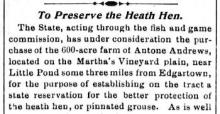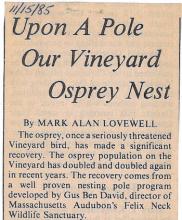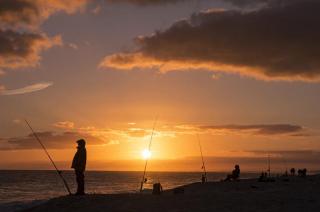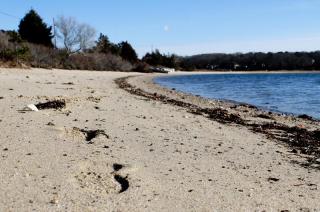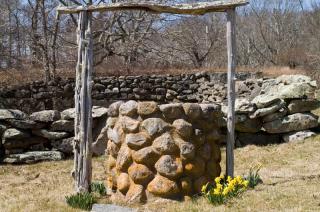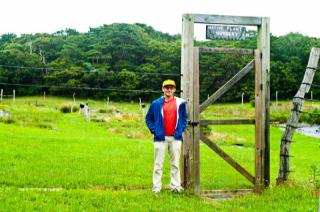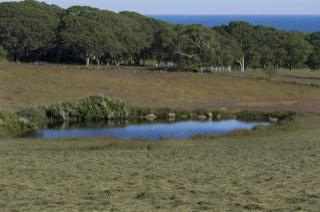Conservation
2013
In his op-ed Conservation is Essential to Save the Striper (Vineyard Gazette, Oct. 31), author Dick Russell suggests that recreational and commercial fishermen stand at odds when it comes to striped bass conservation. He claims that commercial striped bass fishermen from Massachusetts and menhaden fishermen from Virginia are obstacles in the way of stronger protections for striped bass.
The 1,000-foot crescent of sand that lies south of the Lagoon Pond Bridge came as an early Christmas present for the Martha's Vineyard Land Bank, where outright gifts of land are rare.
Imagine sheep grazing at Wasque Point on Chappaquiddick, or goats and cattle browsing the greenery at Long Point Wildlife Refuge.
It’s not a long shot if farmers and conservation groups can manage land together, says David R. Foster, an ecologist and director of the Harvard Forest.
“This is a fabulous time for agriculture and there’s a wonderful opportunity for agriculture, land owners and conservationists to come together in a way that they haven’t previously,” Mr. Foster said in an interview at his home this week.
The family of the late Edwin Newhall (Bob) Woods has gifted 500 acres of rare and unspoiled oak forest, freshwater wetlands and frost bottom in West Tisbury and Chilmark to The Nature Conservancy, the conservancy announced early this week. The gift creates permanent protection for the heart of one of the most significant natural areas on the Vineyard.
2012
Residential developments, historically perceived as a threat to wildlife habitats, are taking on a positive role through a new Nature Conservancy program called the Vineyard Habitat Network.
Residences that can actually foster healthy habitats? It’s not only possible, it’s being done already, habitat officials say.
After coming from Nantucket to the Vineyard on Wednesday, Cormac Collier first noticed the trees lining the roads that wind through Chilmark.
“We took a little tour on the western side of the Island, and the one thing I was most amazed about was . . . the forests that are here. We definitely have some similarities in terms of geological formations and vegetation, but the amount of mature forests that are here is pretty remarkable. It’s definitely nice to come here, because we don’t have forests like you,” he said.
